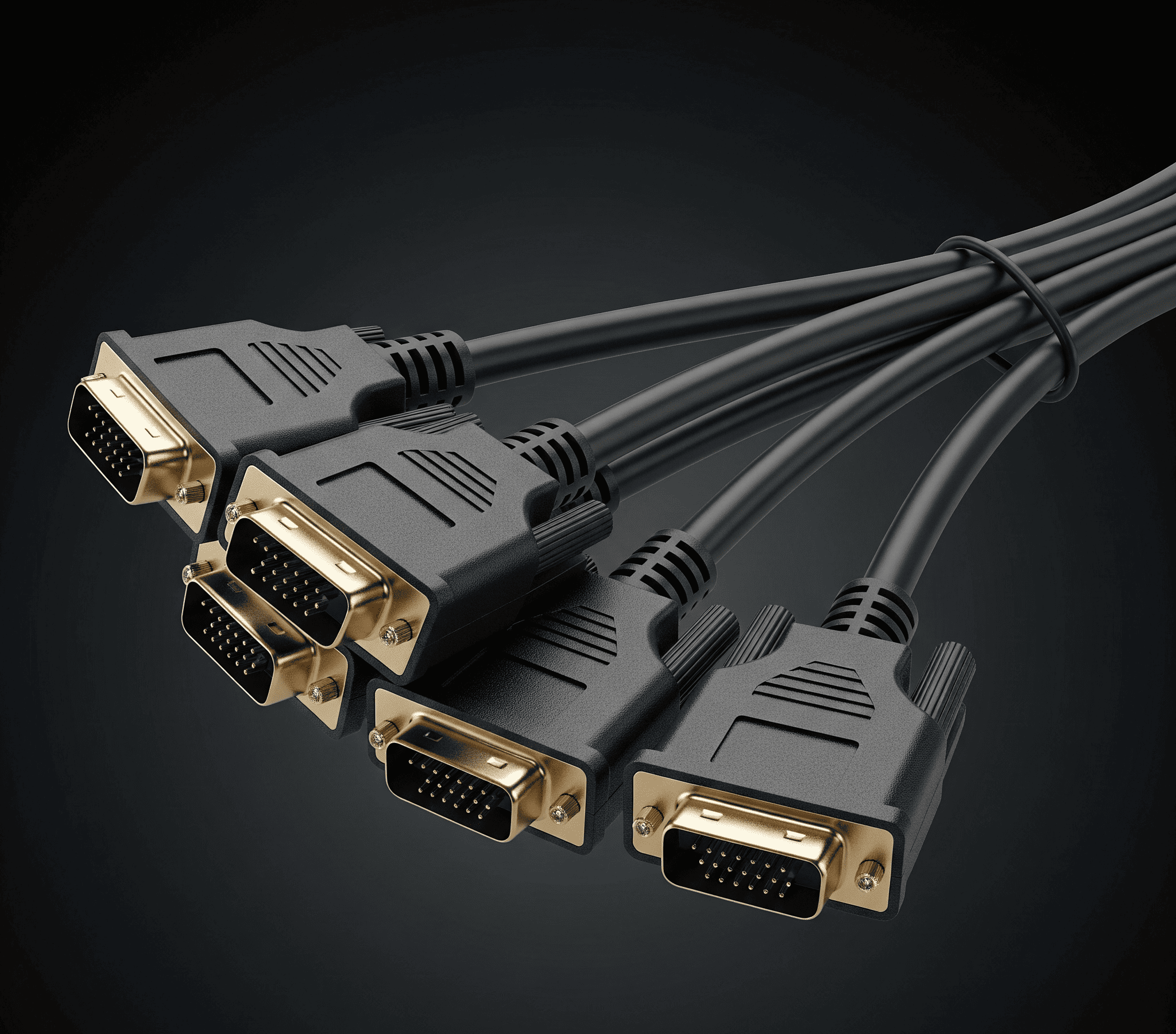Kingsgrove Branch:
DVI to HDMI

DVI to HDMI: Ready to connect your older equipment to a newer display? This guide walks you through the process of converting DVI to HDMI, from understanding the differences to choosing the right converter for your setup
DVI and HDMI are both popular video interfaces, but they differ in how they transmit video and audio signals. This conversion is a common need for those upgrading their display setups or connecting older devices to modern TVs and monitors. Choosing the right DVI to HDMI converter is crucial for a smooth transition. We'll explore various converter types, key factors to consider, and how to ensure compatibility with your devices
We'll also delve into troubleshooting common issues and look at future trends in video interfaces. Ready to get started?
DVI to HDMI Conversion: A Comprehensive Guide
Connecting your older devices to newer displays can sometimes feel like a puzzle. This guide walks you through the world of DVI to HDMI conversion, covering everything from the basics to advanced troubleshooting
Introduction to DVI to HDMI Conversion
DVI and HDMI are both popular video interfaces, but they have key differences. DVI primarily focuses on video signals, while HDMI combines video and audio. This difference is crucial when considering a conversion
| Interface Type | Resolution Support | Audio Support | Typical Applications |
| DVI | High resolutions, typically used for displays | No | Connecting older computers, graphics cards, and monitors |
| HDMI | High resolutions, often supporting 4K and beyond | Yes | Modern displays, TVs, and devices requiring both video and audio |
| DVI to HDMI Converter | Enables DVI to output an HDMI signal | Allows for audio transmission | Bridging the gap between older and newer equipment, upgrading displays |
Types of DVI to HDMI Converters
Several converter types exist, each with its own characteristics. Understanding these distinctions can help you make the right choice
- Active Converters: These converters process the signal, often providing better quality and compatibility. They typically cost more but offer enhanced performance
- Passive Converters: These converters simply pass the signal along, often at a lower cost. They might not handle every situation as well as active ones
| Converter Type | Features | Price | Performance |
| Active | Improved signal quality, wider compatibility | Higher | Excellent |
| Passive | Simple signal transmission | Lower | Good, but potentially limited |
Choosing the Right DVI to HDMI Converter
Several factors influence your choice. Consider the resolution, bandwidth, and audio support your setup requires
- Resolution: Ensure the converter supports the resolution of your display
- Bandwidth: Adequate bandwidth is essential for smooth video transmission
- Compatibility: Check the compatibility with both your DVI source and HDMI destination
Incompatibility can lead to poor image quality, signal loss, or no display at all
Using DVI to HDMI Converters with Specific Devices
Connecting converters to various devices follows a similar process
- Connect the DVI cable to the source device
- Connect the HDMI cable to the converter
- Connect the other end of the HDMI cable to the display
Troubleshooting often involves checking connections, ensuring proper power supply, and verifying compatibility
Product from schnap.com.au
Schnap.com.au offers a range of HDMI products. Their quality and reliability are often praised
| Product | Features | Pricing | Comparison |
| Schnap Converter A | Active, high resolution support | Mid-range | Competitive with other brands |
Potential Issues and Troubleshooting, Dvi to hdmi
Common issues include signal loss, image distortion, or audio problems. Check connections and compatibility first
- No signal: Check cables, connections, and device settings
- Image distortion: Ensure correct resolution and bandwidth settings
Future Trends in DVI to HDMI Conversion
Emerging video technologies might change how we connect devices. Expect more high-bandwidth and high-resolution standards
Closing Notes
In conclusion, converting from DVI to HDMI opens up a world of possibilities for connecting older equipment to modern displays. By carefully considering the different converter types, compatibility factors, and potential issues, you can ensure a seamless and high-quality visual experience. We've covered everything from the basics of DVI and HDMI to advanced troubleshooting techniques, empowering you to make the right choice for your needs, see displayport to hdmi
Remember to check compatibility before purchasing, and don't hesitate to consult our FAQs for further assistance. Happy connecting
Popular Questions: Dvi To Hdmi
What are the common problems when using a DVI to HDMI converter?
Signal loss, image distortion, and audio problems are common issues. Troubleshooting often involves checking connections, adjusting settings, or confirming compatibility. Refer to the troubleshooting section for more details
How do I choose the right DVI to HDMI converter?
Consider resolution, bandwidth, audio support, and compatibility with your specific devices and displays. Read reviews and compare features before making a purchase
Is there a difference between active and passive DVI to HDMI converters?
Active converters boost the signal, often offering better performance, especially with longer cables. Passive converters rely on the existing signal, which may have limitations for extended distances or complex setups
What are the differences between DVI and HDMI?
DVI primarily focuses on video signals, while HDMI transmits both video and audio. HDMI offers a more comprehensive connection experience
Recent posts

Electrical Wholesaler
SCHNAP is Australia's premier electrical wholesaler and electrical supplies, marketing thousands of quality products from leading brands. Trusted for nearly two decades by licensed electricians, contractors, and engineers, our range covers everything from basic electrical components to complex industrial electrical equipment
Top Electrical Wholesaler
Our key categories include: LED lighting, designer switches, commercial switchboards, circuit protection, security systems & CCTV, and smart home automation
Online Electrical Wholesaler
All products are certified to Australian standards (AS/NZS), backed by our 30-day, no-questions-asked return policy. Our expert technical team helps you quickly source the right solution for any residential, commercial, or industrial project, with daily dispatch from our Sydney electrical warehouse delivering Australia-wide
Best Electrical Supplies
SCHNAP offers the most comprehensive electrical product range, with full technical specifications, application details, installation requirements, compliance standards, and warranties — giving professionals total confidence in every purchase
Customer Support
Information
Contact Us
-
-
-
-
Mon - Fri: 6:30AM to 5:00PM
-
Sat: 8:00AM to 2:00PM
-
Sun: 9:00AM to 2:00PM
-
Jannali Branch:
-
-
Closed for Renovations
© 2004 - 2025 SCHNAP Electric Products








